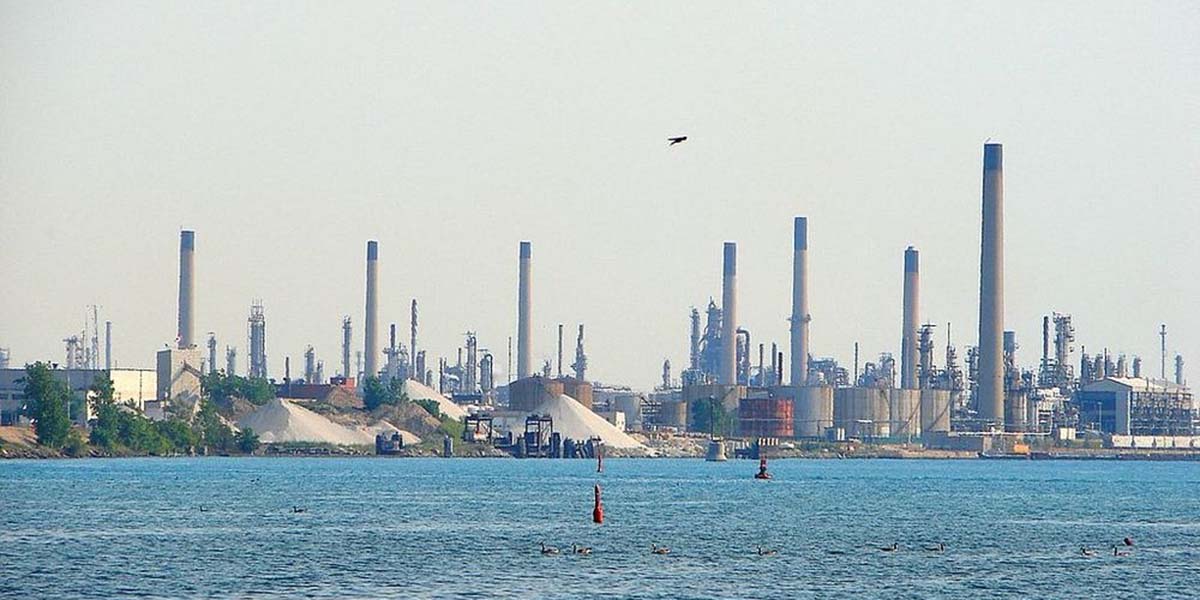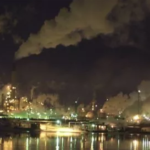This is an excerpt from a story I wrote this week for Bridge Magazine.
By Chad Selweski
An emergency alert system that is supposed to warn Great Lakes communities of toxic spills from Canada’s Chemical Valley (above) is outdated, overly complicated and often useless in giving Michigan coastal cities timely notice of an environmental threat.
Michigan officials say hours can pass before they are told of oil or chemical spills into the St. Clair River. Given the river’s swift current, a delay of over an hour from the Sarnia, Ontario facilities makes the warnings of limited value to coastal communities south of Port Huron, critics say.
Officials overseeing the byzantine system concede that alerts sometimes pass through up to five government agencies in Canada and the U.S. before they reach cities and towns along a spill’s path.
In addition, many of the roughly 60 factories within Chemical Valley announce spill alerts not through some high-tech form of automated mass communication. Rather, they alert Sarnia police through a relic of pre-9/11 technology: the fax machine.
“A rat in a maze couldn’t follow the diagram that tells officials who to contact next,” Doug Martz, who served as chairman of the Macomb County Water Quality Board until it was disbanded in 2011, said of the Canadian warning system.
“In today’s age, it makes no sense,” he said. “Does the system work? Absolutely not.”
Continue reading here.
MORE COVERAGE: Chemical Valley and the threat to Michigan’s drinking water
Photo: P199/Wikimedia




